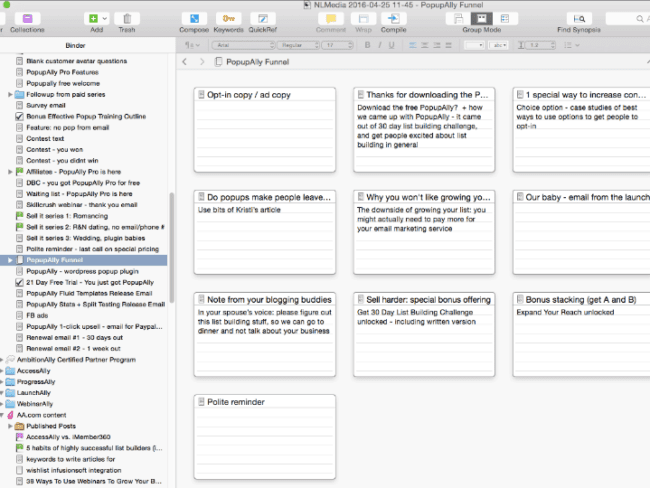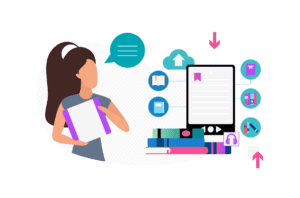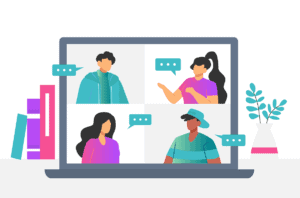Introduction and Overview: Converting Subscribers into Students
Creating an email sequence that turns subscribers into engaged students is both an art and a science. You’re not just sending out random emails – you’re crafting a strategic journey that builds trust, demonstrates value, and guides potential students toward your course offerings. When it comes to online education, your email sequence serves as the bridge between initial interest and full enrollment.
The most effective email sequences follow a clear psychological progression. Start by acknowledging your subscriber’s current challenges and paint a vivid picture of their desired transformation. Then, gradually introduce your course as the solution, building credibility through valuable content and social proof along the way. Think of it as a conversation that naturally evolves from “I understand your struggle” to “Here’s how we can solve this together.”
Your sequence should typically include 5-7 emails spread across 2-3 weeks. This timing allows you to maintain momentum while giving subscribers enough space to digest each message. The first email should deliver immediate value – perhaps a quick win or valuable insight – while subsequent messages can dive deeper into specific pain points and solutions. Remember to vary your content format, mixing educational tips with student success stories and behind-the-scenes glimpses of your course.


A common mistake is jumping straight to the sale. Instead, focus on building genuine connections through valuable content first. Share case studies of successful students, offer mini-training videos, or provide downloadable resources that give a taste of your teaching style. This approach demonstrates your expertise while helping subscribers envision themselves succeeding in your course.
The key to success lies in maintaining consistent engagement throughout the sequence. Each email should end with a clear call-to-action, whether it’s watching a video, downloading a resource, or simply replying with their biggest challenge. These micro-commitments keep subscribers actively participating in the conversation and moving closer to enrollment. By the time you present your course offer, they should feel naturally ready to take the next step in their learning journey.
Foundation Concepts and Planning
Creating email sequences that convert subscribers into students requires careful planning and a deep understanding of your audience’s journey. Before diving into email creation, you need to map out the transformation you’re promising and the steps needed to get there. Think of your email sequence as a bridge connecting your subscribers’ current challenges to their desired outcomes through your course.
The first critical step is defining your ideal student persona. What keeps them up at night? What have they already tried that didn’t work? Understanding these pain points helps you craft messages that resonate deeply. For example, if you’re teaching digital marketing, your subscribers might be frustrated with scattered, ineffective efforts that aren’t bringing results. Your emails should acknowledge this struggle while positioning your course as the structured solution they need.
Next, outline your sequence structure based on where subscribers are in their journey. A well-planned sequence typically includes welcome emails, value-building content, social proof, and strategic calls to action. Consider creating a 5-7 email welcome sequence that introduces your teaching style and establishes credibility before moving into course promotion.


Timing and pacing play crucial roles in conversion success. Space your emails to maintain engagement without overwhelming subscribers. A good rule of thumb is sending 2-3 emails per week during launch periods, and 1-2 weekly emails during nurture phases. This keeps you present in their inbox while respecting their attention.
Your content strategy should follow a clear progression. Start with quick wins that demonstrate value, then gradually introduce more complex concepts that your course addresses in depth. For instance, if you teach photography, begin with simple composition tips before exploring advanced lighting techniques that are covered extensively in your course.
Remember to incorporate various content types throughout your sequence. Mix educational emails with student success stories, behind-the-scenes glimpses of your course, and answers to common objections. This variety keeps subscribers engaged while building trust in your teaching ability.
Finally, create clear transition points between different sequence phases. Your nurture emails should smoothly lead into pre-launch content, which then flows naturally into your course enrollment period. Each phase should build upon the previous one, creating momentum toward the ultimate goal of course enrollment.
Testing and measurement systems need to be established from the start. Track open rates, click-through rates, and conversion points to understand which messages resonate most effectively. This data will help you refine your sequence over time, improving its performance with each iteration.
Step-by-Step Implementation Guide
Start by mapping out your welcome sequence. This initial touchpoint sets the tone for your entire relationship. Your first email should deliver immediate value while confirming their subscription. Include a brief introduction about yourself, remind them why they signed up, and outline what they can expect from your emails. Consider offering a quick win – perhaps a downloadable worksheet or mini-training video that showcases your teaching style.
The key to success lies in segmenting your audience effectively. Your second email should include a simple survey or question that helps categorize subscribers based on their specific needs and challenges. This information becomes invaluable for personalizing future communications and course recommendations. For example, if you’re teaching digital marketing, ask whether they’re most interested in social media, email marketing, or paid advertising.
Days three through five should focus on building credibility and trust. Share success stories from previous students, demonstrate your expertise through practical tips, and address common objections you’ve encountered. Remember to maintain a conversational tone – you’re building a relationship, not delivering a sales pitch. Each email should provide standalone value while subtly highlighting how your course offers even deeper insights.
Around day six or seven, introduce your signature course offering. By now, subscribers understand your teaching style and trust your expertise. Frame your course as the natural next step in their journey, emphasizing specific outcomes and transformation. Include social proof elements like testimonials and case studies, but keep the focus on how the course solves their specific challenges.
The follow-up sequence is crucial for those who don’t convert immediately. Create a series of emails addressing common hesitations, sharing more detailed student success stories, and offering different perspectives on the value of your course. Consider including time-sensitive bonuses or payment plans to help overcome financial objections.
| Plan | Features | Best For |
|---|---|---|
| Starter | Basic course creation | New course creators |
| Professional | Advanced features + integrations | Growing businesses |
| Enterprise | Full customization + support | Large organizations |
Monitor engagement metrics closely throughout the sequence. Track open rates, click-through rates, and conversion points to optimize your approach. If certain emails consistently underperform, revise their content or timing. Pay special attention to unsubscribe rates after promotional emails – this can indicate whether your sales approach feels natural or too aggressive.
Finally, don’t forget to maintain engagement with those who haven’t yet converted. Create a nurture sequence that continues providing value through bite-sized tips, industry updates, and occasional reminders about your course. This long-term approach keeps your offering top-of-mind while demonstrating your ongoing commitment to their success.
Remember that your email sequence is a living document. Regularly review and update your content based on student feedback, industry changes, and your own evolving expertise. The most effective sequences evolve alongside your audience’s needs and your course offerings.
Advanced Strategies and Techniques for High-Converting Email Sequences
Let’s dive deep into the advanced tactics that can transform your email sequences from basic follow-ups into powerful conversion machines. The key to success lies in creating personalized journeys that speak directly to your subscribers’ specific needs and pain points. Start by segmenting your audience based on their interaction with your initial emails – this allows you to craft targeted follow-up sequences that resonate more deeply.
One particularly effective strategy is the “micro-commitment ladder” approach. Instead of immediately pushing for course enrollment, guide subscribers through a series of small, achievable actions. This might start with downloading a free worksheet, then participating in a mini-challenge, followed by joining a free workshop. Each step builds trust and demonstrates the value you provide, making the eventual course purchase feel like a natural progression.
Consider implementing behavioral triggers in your sequences. When a subscriber clicks on specific links or engages with certain content, automatically adjust their journey to provide more relevant information. For example, if someone repeatedly opens emails about time management, your sequence should adapt to emphasize how your course addresses this particular pain point. This level of personalization can significantly boost your conversion rates, as discussed in our guide on building effective learning and development strategies.
Timing and frequency play crucial roles in sequence effectiveness. Rather than sticking to arbitrary schedules, analyze your engagement metrics to identify optimal sending times. Pay special attention to when your most engaged subscribers typically open emails and interact with your content. Consider implementing a dynamic timing system that adjusts based on individual subscriber behavior patterns.
Story-driven content deserves special attention in your advanced sequence strategy. Share real student success stories, but break them down across multiple emails to create anticipation and emotional investment. Include specific details about their struggles, breakthroughs, and transformations. This approach helps potential students envision their own success journey through your course.
Don’t overlook the power of social proof integration. Weave testimonials, case studies, and social media mentions naturally throughout your sequence. Rather than dumping all social proof into a single email, strategically place different types of social validation at key decision points in the subscriber journey. This creates a consistent reminder that others have succeeded with your course.
Finally, implement a robust testing and optimization system. Beyond basic A/B testing of subject lines, experiment with different storytelling approaches, call-to-action placements, and emotional triggers. Track not just open rates and clicks, but also the specific pathways that lead to successful course enrollments. Use this data to continuously refine your sequences for maximum impact.
Common Challenges and Solutions in Email Sequence Creation
Creating email sequences that successfully convert subscribers into students isn’t always smooth sailing. One of the biggest challenges course creators face is maintaining consistent engagement throughout the sequence. When subscribers stop opening emails or clicking through, it’s often because the content hasn’t been properly segmented or personalized to their specific needs and interests.
The key to success lies in understanding your audience’s journey. Start by mapping out different subscriber personas and their unique pain points. For example, if you’re teaching digital marketing, some subscribers might be complete beginners looking for foundational knowledge, while others could be experienced marketers seeking advanced strategies. Your email sequence should acknowledge these differences and provide relevant value to each group.
Another common stumbling block is poor timing and pacing. Sending too many emails too quickly can overwhelm subscribers, while spacing them too far apart can lead to disconnection. Consider implementing a dynamic timing strategy – start with more frequent touchpoints during the first week (every 2-3 days), then gradually decrease frequency as you move through the sequence. This helps maintain interest without causing email fatigue.
Content relevance often poses a significant challenge. Many course creators make the mistake of focusing too heavily on selling rather than providing value. Structure your sequence to deliver immediate wins – quick tips, actionable worksheets, or mini-training videos that give subscribers a taste of your teaching style and expertise. This builds trust and demonstrates the value of your full course offering.
Technical issues can also derail your conversion efforts. Ensure your email service provider properly integrates with your course platform, test all links thoroughly, and regularly monitor your deliverability rates. Pay special attention to mobile optimization – with over 60% of emails being opened on mobile devices, your content must look perfect on smaller screens.
Finally, many course creators struggle with crafting compelling calls-to-action (CTAs). Instead of generic “Buy Now” buttons, create urgency through limited-time bonuses or early-bird pricing. Make your CTAs specific and benefit-focused – for instance, “Start Your Website Redesign Today” is more compelling than “Enroll Now.” Remember to include social proof elements like student testimonials or success stories near your CTAs to reinforce the decision to purchase.
Best Practices and Optimization
Creating email sequences that convert subscribers into students requires a delicate balance of timing, content value, and persuasive elements. The key to success lies in understanding your audience’s journey from initial interest to enrollment. Start by mapping out specific pain points and aspirations that led them to join your email list in the first place.
Your email sequence should follow a strategic progression. Begin with a warm welcome email that delivers immediate value and sets expectations. Follow up with content-rich emails that demonstrate your expertise while addressing common challenges. For example, if you’re teaching digital marketing, share a quick win like improving social media engagement, then gradually introduce more complex concepts that your course covers in depth.
Timing is crucial for optimization. Data shows that spacing emails 2-3 days apart maintains engagement while preventing list fatigue. Monitor your open rates and adjust accordingly – if you notice declining engagement, consider extending the interval between emails. For reference, check out the comprehensive strategies outlined in our guide on building an effective L&D strategy.
Personalization goes beyond using first names. Segment your list based on behavior and interests. When subscribers click on specific topics in your emails, tag them accordingly and customize future content. This targeted approach typically increases conversion rates by 20-30%. Use your email platform’s automation features to create branching sequences that respond to subscriber actions.
| Feature | Benefit | Use Case |
|---|---|---|
| Drip Content | Increases engagement | Course progression control |
| Quiz & Assessments | Validates learning | Student progress tracking |
| Certificates | Motivates completion | Professional development |
| Community Access | Builds loyalty | Student interaction |
Subject lines deserve special attention in your optimization efforts. Test different approaches – questions, curiosity gaps, benefit-driven statements – and track which performs best. Keep subject lines under 50 characters for mobile optimization, and maintain consistency with your brand voice while varying your approach to prevent subject line fatigue.
Social proof should be strategically placed throughout your sequence. Include student testimonials, case studies, and success stories that relate specifically to the pain points you’re addressing in each email. Make these stories concrete and specific – instead of saying “improved their business,” say “increased revenue by 45% in three months.”
Finally, your call-to-action (CTA) strategy should evolve throughout the sequence. Early emails might direct subscribers to valuable free resources, while later ones should create urgency around course enrollment. Test different CTA placements, button colors, and copy variations. Remember that clear, benefit-focused CTAs typically outperform generic “Sign Up Now” buttons.
Case Studies and Examples: Email Sequences That Drive Course Enrollment
Let’s dive into some real-world examples of email sequences that have successfully converted subscribers into engaged students. One standout case comes from Sarah, a business coach who transformed her 12% conversion rate into an impressive 34% by restructuring her welcome sequence. The key to her success was simple yet powerful: she focused on delivering immediate value before making any course offers.
Sarah’s winning sequence started with a comprehensive welcome email that included a free business assessment tool. This was followed by three value-packed emails sharing actionable tips from her signature framework. Only on day five did she introduce her flagship course, but by then, subscribers were already implementing her strategies and seeing results. This built incredible trust and positioned her course as the natural next step.
For comprehensive guidance on course creation platforms, see this detailed analysis from WPBeginner Training Course Showcase.
Another inspiring example comes from Marcus, a language learning expert who noticed his subscribers weren’t engaging with his traditional promotional emails. He completely revamped his approach, creating a 7-day story-driven sequence that followed one of his successful students from complete beginner to conversational fluency. Each email mixed practical language tips with compelling narrative, keeping readers hooked while showcasing his teaching methodology in action.
When it comes to technical skills training, Lisa’s case offers valuable insights. Teaching advanced Photoshop techniques, she realized her subscribers were overwhelmed by the software’s complexity. Her solution? A sequence that broke down one simple editing technique per email, accompanied by before-and-after images. The final email in her sequence revealed how these individual techniques combined into the comprehensive workflow taught in her full course.
The fitness industry provides another powerful example through Tom’s online yoga studio. His sequence focused on solving one specific pain point: finding time for practice. Each email provided a 5-minute yoga sequence, proving that even busy professionals could benefit from his approach. By the time he introduced his comprehensive program, subscribers had already established a consistent practice habit.
Frequently Asked Questions
How long should my email sequence be?
I recommend starting with a 5-7 email welcome sequence spread over 2 weeks. This gives you enough touchpoints to build trust and showcase your expertise without overwhelming new subscribers. You can always test and adjust the frequency based on your audience’s engagement.
When’s the best time to pitch my course in the sequence?
Focus on providing value in your first 3-4 emails before making any course offers. Build genuine connections by sharing helpful tips, success stories, and addressing pain points. Once you’ve established trust, introduce your course as a natural solution to their challenges.
What should I include in my welcome email?
Your welcome email should warmly introduce yourself, confirm their freebie delivery, and set clear expectations about what they’ll learn from you. I always include a quick win or actionable tip to demonstrate immediate value, plus a personal story to make a human connection.
How do I keep subscribers engaged throughout the sequence?
Mix up your content types with how-to tips, student success stories, and behind-the-scenes glimpses into your teaching approach. Encourage two-way communication by asking questions and inviting replies – this helps build community and gives you valuable insights into your audience’s needs.
Should I segment my email list for better conversion?
Absolutely! Start by segmenting based on their interests, experience level, or specific challenges they’re facing. This allows you to send more targeted, relevant content that speaks directly to their needs, ultimately leading to better course conversion rates.
Future Considerations and Conclusion
As you refine your email sequence strategy, remember that the digital education landscape continues to evolve rapidly. Your future success depends on staying adaptable and responsive to changing student needs. Consider implementing A/B testing not just for subject lines, but for different content formats, call-to-action placements, and even the timing of your automated sequences. This data-driven approach will help you continuously optimize your conversion rates.
When it comes to scaling your course business, automation will become increasingly crucial. Look into incorporating advanced segmentation based on student behavior patterns, not just their stated preferences. For example, if certain subscribers consistently engage with emails about specific topics, create automated paths that deliver more of that content type, increasing the likelihood of conversion.
Interactive elements are becoming more important in email marketing. Consider adding polls, surveys, or clickable content that allows subscribers to customize their journey. This not only increases engagement but provides valuable data about what your potential students actually want. You might discover that what they say they want (through surveys) differs from what they actually engage with (through click data).
Mobile optimization will only become more critical in the coming years. While most email platforms automatically adjust for mobile viewing, consider going beyond basic responsiveness. Think about how your preview text appears on different devices, how your images scale, and whether your call-to-action buttons are easily clickable on smaller screens.
The key to success lies in maintaining authenticity while scaling your operations. As your subscriber list grows, personalization becomes both more challenging and more important. Consider investing in tools that allow for dynamic content insertion based on subscriber behavior, interests, and previous interactions with your content.
Remember that building a successful email sequence isn’t a one-time task – it’s an ongoing process of refinement and optimization. Stay committed to testing, measuring, and improving your sequences. Keep your focus on delivering value first, with sales being a natural outcome of building trust and establishing expertise. By maintaining this student-first approach while incorporating these future-focused strategies, you’ll be well-positioned to convert subscribers into successful students for years to come.







